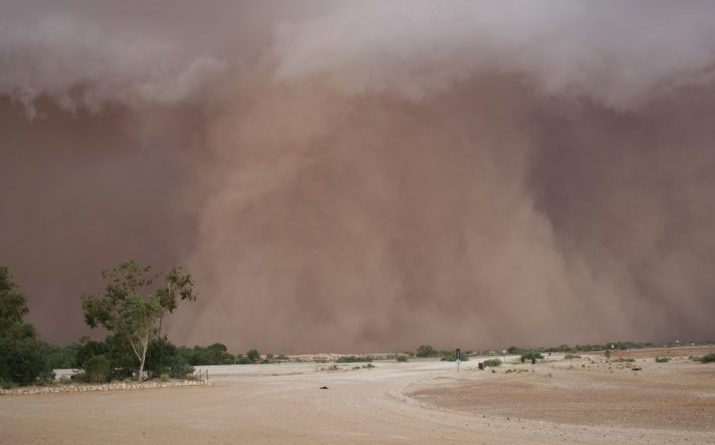Return of the Dust Bowl
Image by Sydney Oats/CC BY 2.0
Article by Monishaa Suresh
When we think of the Dust Bowl, sepia tinted images reminiscent of the Great Depression or the Joad family’s evacuation of Oklahoma usually come to mind. However, climate change projections show that there is potential for another dust bowl in the future.
The great Dust Bowl of the 1930s was the result of a combination of persistent drought, land use, land cover change, improper farming methods, and economic factors [1]. Over time, the topsoil eroded and with improper land cover, there was nothing to hold the soil down causing dust storms of the past.
Unfortunately, new findings by researchers at Princeton University and the National Oceanic and Atmospheric Administration’s (NOAA) Geophysical Fluid Dynamics Laboratory show that “climate change will increase dust activity in the southern Great Plains from spring to fall in the late half of the twenty-first century – largely due to reduced precipitation, enhanced land surface bareness, and increased surface wind speed”[2].
Climate change predictions and models show increased temperatures in southwestern and Great Plains states. These areas are already predisposed to dust activity due to their location as well as history with dust storms. Increased temperatures and decreased rainfall will result in crop and plant death allowing for the erosion of topsoil that resulted in the Dust Bowl.
Although the original Dust Bowl agricultural, economic, and technological conditions are rather different from those of today, the repercussions could still be huge. In the original Dust Bowl, hundreds of thousands of people were forced to leave 19 states, and the dust caused livestock and people from “dust pneumonia”[3]. While we may be able to dust proof buildings and infrastructure systems better than we would have been able to in the past, such dust storms could cause irreparable damage to the environment and food supply systems that are reliant on the Great Plains region for livestock and produce. However, our technological advances could also work to our detriment as exposure to today’s dust could result in dangerous exposure to agricultural chemicals such as fertilizers and pesticides.
The dust storms won’t come tomorrow or next month but as the global temperature increases and we do nothing to combat it, the surroundings and climate becomes more and more ideal for these storms to ravage the land. While we can prepare for it with dust-proofing and evacuation, we must first think about what we can do to prevent such an occurrence from happening at all.
Works Cited
[1] Ginoux, Paul & Pu, Bing “Projection of American dustiness in the late 21st century due to climate” Nature.com (July 17, 2017) https://pdf.nature.com/redirect-nature?ddsId=art:10.1038/s41598-017-05431-9&originUrl=https://www.nature.com/articles/s41598-017-05431-9&contentType=pdf
[2] Ginoux, Paul & Pu, Bing “Projection of American dustiness in the late 21st century due to climate” Nature.com (July 17, 2017) https://pdf.nature.com/redirect-nature?ddsId=art:10.1038/s41598-017-05431-9&originUrl=https://www.nature.com/articles/s41598-017-05431-9&contentType=pdf
[3] McKay, Tom “Scientists Warm Climate change Could Bring the Dust Bowl Back Out of the History Books” Gizmodo (July 18, 2017) https://gizmodo.com/scientists-warn-climate-change-could-bring-the-dust-bow-1797000785

